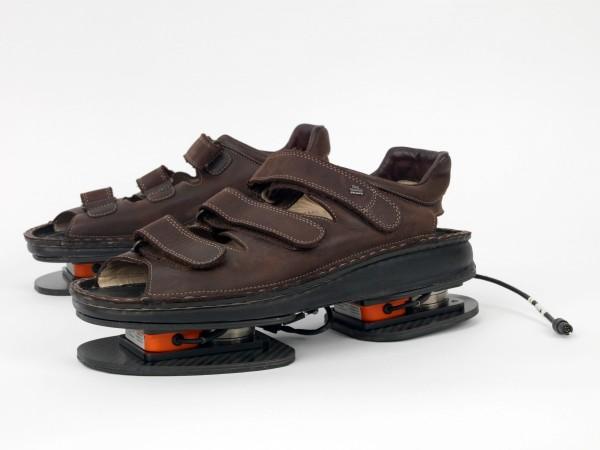
NASA has sent a pair of high-tech sandals to the International Space Station (ISS) on Thursday, 29 May 2014. The purpose behind the device is to understand the effects of heavy loads on space flyers' muscle and bone health while in zero gravity.
The space sandal called ForceShoe Development of Advanced Resistive Exercise Device (ARED) has been designed by XSENS.
The high-tech device will provide the crew members the capability to perform heavy exercises in space by supplying resistance using the power of vacuum cylinders.
"Crew members will be asked to set the ARED to provide specific loads in the same way they would set loads on a weightlifting machine at the gym. They will then lift the exercise bar and stand still on ARED while the shoes collect data. This simple and repetitive test is necessary to make sure the force measuring shoe works as well in microgravity as it does on Earth." said NASA in the news release.
"ARED is a sophisticated exercise device. Although it has helped NASA provide better health outcomes for crew members, there is still progress to be made in understanding the effects of exercise on bone and muscle health, and the ForceShoe will help us do that." said Andrea Hanson, Ph.D and ISS Exercise Hardware Specialist.
Even though transportable load monitoring technologies called force shoes are under evaluation on the ground, NASA chose ForceShoe to fly to the space station as it offers complete load measures.
For collecting data, astronauts will have to lift the exercise bar and stand erect on ARED while the shoes gather data. Dynamic exercise will include dead-lifts, squats and bicep curls. Although it has helped NASA provide better health results for crew members, development has still to be made in understanding the consequences of exercise on bone and muscle health, which will be made by ForceShoe.
"We are eager to understand how joint forces may be different between exercise performed on the ground and in space, and force shoe technology might help us do this in future investigations. As we prepare for future missions to asteroids, Mars and beyond, we need to think about minimizing and miniaturizing equipment because spacecraft will be smaller. The ForceShoe is a great example of the way we can shrink some of our research tools for future missions." says Hanson.





!['Lip lock, pressure, pyaar': Vidya Balan- Pratik Gandhi shine in non-judgmental infidelity romcom Do Aur Do Pyaar [ Review]](https://data1.ibtimes.co.in/en/full/797104/lip-lock-pressure-pyaar-vidya-balan-pratik-gandhi-shine-non-judgmental-infidelity-romcom.jpg?w=220&h=138)







